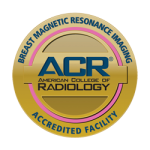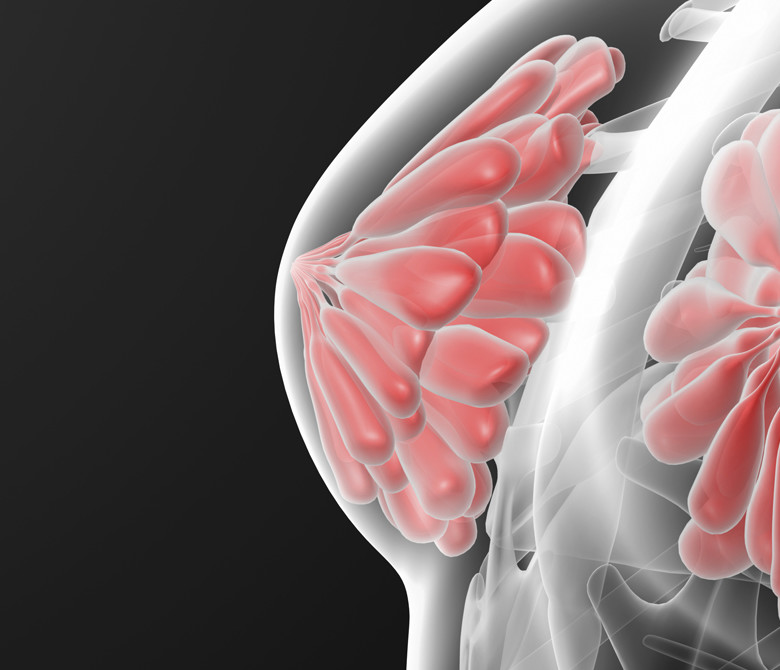Ultrasound of the Breast

What is Ultrasound Imaging of the Breast?
Ultrasound imaging, also called ultrasound scanning or sonography, uses a small transducer (probe) and ultrasound gel placed directly on the skin. High-frequency sound waves are transmitted from the probe through the gel into the body. The transducer receives the sounds that bounce back and a computer then uses those sound waves to create an image. Because ultrasound images are captured in real-time, they can show the structure and movement of the body’s internal organs, as well as blood flowing through blood vessels.
During a breast ultrasound the sonographer or physician performing the test may use Doppler techniques (Doppler ultrasound is a special ultrasound technique that allows the physician to see and evaluate blood flow through arteries and veins), to evaluate blood flow or lack of flow in any breast mass. In some cases this may provide additional information as to the cause of the mass or abnormality.





Why should I have a breast ultrasound?
The primary use of breast ultrasound today is to determine the nature of a breast abnormality detected by a physician during a physical exam (such as a lump or nipple discharge), and to diagnose potential abnormalities seen on mammography or breast magnetic resonance imaging (MRI).
Ultrasound imaging can help to determine if an abnormality is solid, fluid-filled or both cystic and solid. Ultrasound can also identify other aspects of the abnormal area.
Doppler ultrasound is used to assess blood supply in breast lesions.
Breast ultrasound is also used for supplemental screening.
Mammography is primary screening tool for that is known to reduce deaths due to breast cancer through early detection. However, mammograms do not detect all breast cancers. Some breast lesions and abnormalities are not visible or can be difficult to interpret on mammograms.
In dense breast, ones with more duct, glandular and fibrous tissue and less fat, many cancers can be hard to see on mammography. At our facility we offer whole breast ultrasound to all patients as part of their annual screening services. This does require an order from you referring physician.
Ultrasound imaging is used in real-time to provide guidance for core needle biopsy of breast masses. An ultrasound exam will usually need to be performed before the biopsy in order to plan the procedure and to determine if this method of biopsy can be used.
For more information on this procedure, please refer to the Ultrasound-guided Breast Biopsy page.
How does the procedure work?
Ultrasound imaging uses the same principles involved in the sonar used by boats, ships and submarines. When a sound wave strikes an object, it echoes or bounces back. By measuring these echo waves, it is possible to determine how far away the object is as well as the object’s size, shape and whether it is fluid filled or solid. Ultrasound is also used to detect changes in appearance, size or contour of organs, tissues, and vessels or detect abnormal masses, such as tumors.
During the ultrasound examination, a transducer sends the sound waves and receives the echoing waves. When the transducer is pressed against the skin, it sends small pulses of silent, high-frequency sound waves into the body. As the sound waves bounce off internal organs, fluids and tissues, the transducer which has a sensitive microphone, records tiny changes in the sound’s pitch and direction. These waves are instantly measured and displayed by a computer, which in turn creates a real-time picture on the monitor. One or more frames of the moving pictures are typically captured as still images. Moving real-time images can also be saved.
Doppler ultrasound, a special application of ultrasound, measures the direction and speed of blood cells as they move through vessels. The movement of blood cells causes a change in pitch of the reflected sound waves (called the Doppler effect). A computer processes the sounds and creates graphs or color pictures that represent the flow of blood through the blood vessels.
How is the procedure performed?
You will lie on your back on the examining table and may be asked to raise your arm above your head.
After you are positioned on the examination table, the radiologist or sonographer will apply a warm water-based gel to the area of the body being studied. The gel helps transmit and receive the sound waves through the skin. The transducer make secure contact with the body. The transducer is placed on the body and moved back and forth over the area of interest until the desired images are captured. There is slight pressure applied as the transducer is moved. If you have areas of tenderness you may experience some discomfort.
If Doppler sonography is performed, the same transducer will be used.
What will I experience during and after the procedure?
The breast ultrasound is generally painless and easily tolerated by most patients.
You may be asked to change positions during the exam for all images to be obtained.
The exam is usually completed within 30 minutes.
When the examination is complete, you may be asked to dress and wait while the ultrasound images are reviewed.
You are able to resume your normal activities immediately.
Who interprets the results and how do I get them?
Our radiologist (a physician specifically trained to supervise and interpret radiology examinations), will analyze the images and an electronic/fax report will be sent to your referring physician, who will share the results with you. In some cases the radiologist may discuss results with you after your examination.
Follow-up examinations may be necessary, and your doctor will explain the exact reason why another exam is requested and when it should be scheduled.
What are the benefits vs. risks?
Benefits
- Most ultrasound scanning is noninvasive (no needles or injections).
- Occasionally, an ultrasound exam may be temporarily uncomfortable, but it is almost never painful.
- Ultrasound is widely available, easy-to-use and less expensive than other imaging methods.
- Ultrasound imaging is extremely safe and does not use any ionizing radiation.
- Ultrasound scanning gives a clear picture of soft tissues that do not show up well on x-ray images.
- Ultrasound provides real-time imaging, making it a good tool for guiding minimally invasive procedures such as needle biopsies and fluid aspiration.
- Ultrasound imaging can help detect lesions in women with dense breasts.
- Ultrasound may help detect and classify a breast lesion that cannot be interpreted adequately through mammography alone.
- Using ultrasound, physicians are able to determine that many areas of clinical concern are due to normal tissue (such as fat lobules) or benign cysts.
Risks
- For standard diagnostic ultrasound, there are no known harmful effects on humans.
Please visit www.Radiologyinfo.org for additional information on this procedure.

